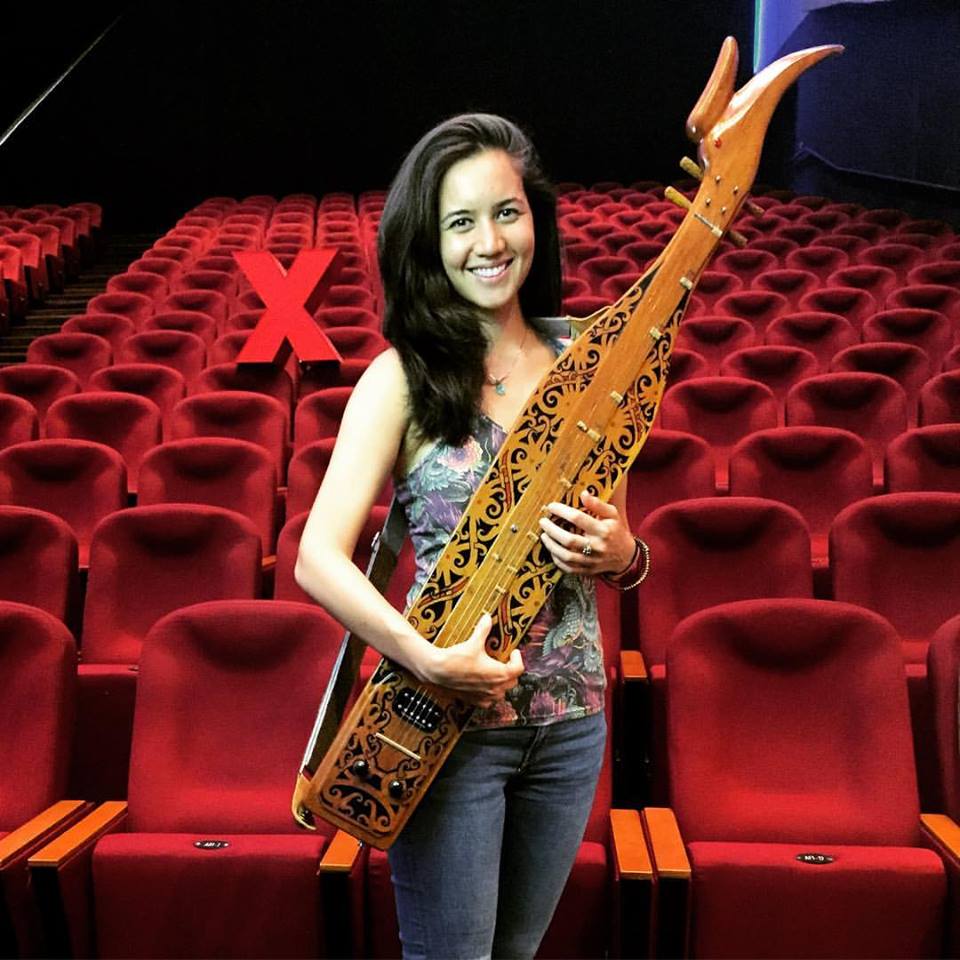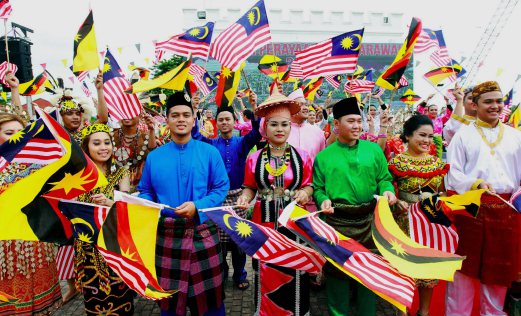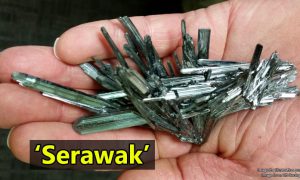How one Kelabit woman is single-handedly trying to save her people’s culture
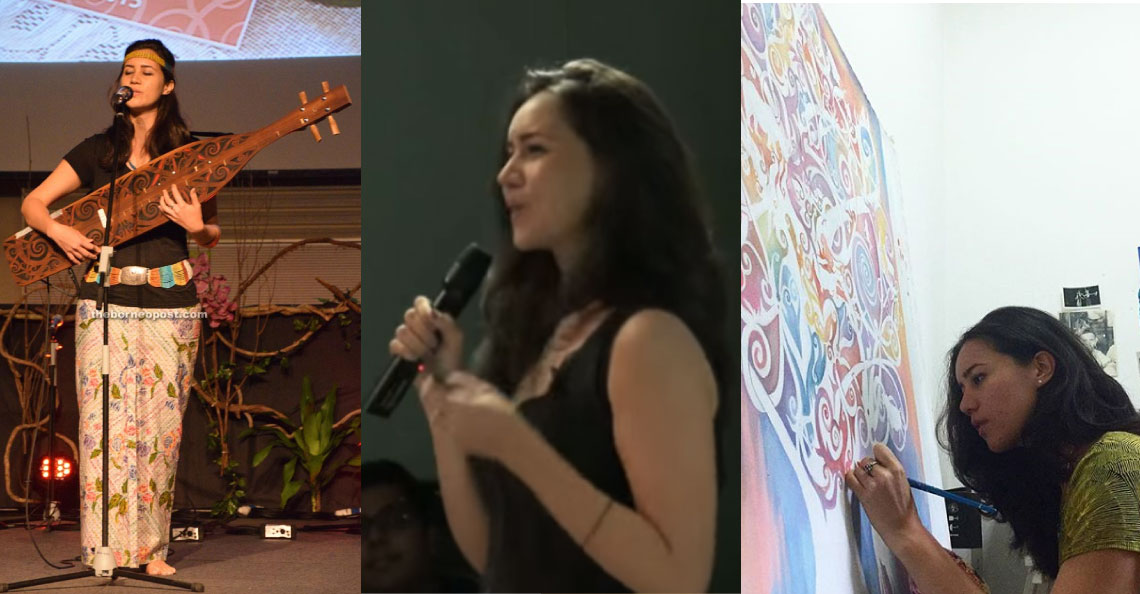
- 17.7KShares
- Facebook17.3K
- Twitter48
- LinkedIn9
- Email96
- WhatsApp205
It’s no secret that traditional culture seems to have lost its place in our modern day world. But what most of us in Peninsula Malaysia might not know that one of our country’s most culturally-rich states – Sarawak – is suffering the same fate!
Sarawak is home to 27 ethnic groups (speaking at least 45 languages and dialects), each having its own cultural traditions. With that many ethnic groups mingling together in harmony, Sarawak has built up a global reputation for its fascinating mix of unique cultures. So it was quite a shock to discover that Sarawak traditional culture was dying out.
Who said Sarawak culture was dying out?
I first heard about this issue at TEDxKL 2016, when a passionate young lady spoke about her work to preserve the dying traditional arts of Sarawak. Alena Murang is a 20-something musician, painter, dancer, teacher and one-time Management Consultant. This multi-talented, part-Kelabit, part-English-Italian lass was born and bred in Kuching but is based in KL today.
During her talk, Alena revealed why Sarawak traditional culture was fast fading away. And this wasn’t just her own opinion. There have been numerous media reports about this phenomenon. Even the former Chief Minister of Sarawak, Taib Mahmud, urged Sarawakians to revive their traditions. And you know that poop’s REALLY gettin’ real when the Sarawak Cultural Village starts to be worried about it too!
So we quickly set up an interview to ask Alena about how she’s keeping Sarawak’s dying culture alive.
Chup… Isn’t Sarawak culture super famous globally? How could it be dying out?!
Well, the reason is quite simple, really. People just stopped listening to their elders.

Hah…see what happens when you don’t listen to your grandfather’s stories! Image from grandfatherstories.net (that’s a real book and web address, we no bluff you!)
You see, the traditional culture, history and arts of Sarawak have been handed down orally from generation to generation for thousands of years… That is, until the ’70s and ’80s rolled around. At that time, massive urban migration and Christian revivals in the interiors caused an entire generation of Sarawak natives to abandon their traditional cultures. To the religious, traditional culture was seen as a connection to their past spirit-worshiping practices. To the urbanites, it was seen as old-fashioned and irrelevant.
And just like that, most Sarawakians during that time stopped learning the oral traditions from their elders. According to Alena, A WHOLE GENERATION of people suddenly discarded their culture. This is an issue that’s very close to Alena’s heart.
“There are still so many stories to be told in the land. But my grandmother’s generation is the last who hold the stories. Me and my dad’s generation don’t ask to learn or hear those stories or songs or traditions anymore. If we don’t hear them, they are just going to fade,” said Alena in our interview.
In fact, it’s not just the songs and stories under threat of extinction. All forms of traditional Sarawak culture – songs, arts, skills, food, values, communities, etc. – are fading away. If that happens, the priceless and irreplaceable heritage of an entire people will be gone forever.
Isn’t anyone doing anything about it?
Some have tried collecting old Sarawak folk tales and publishing them in books. But the real issue is that the majority of people are just not interested in traditions anymore. If there are only a very few who remember them, and maybe even fewer who want to learn them, when the last generation of elders eventually pass on… you get the picture, la.
Ironically, while traditional culture skipped the previous generation, urban GenY Sarawakians like Alena are leading conservation efforts today. Many young Sarawakians are revisiting their cultural roots, taking up the traditional arts and breathing new life into them. Here’s where Alena’s work comes into play (pun not intended).
So how is Alena gonna save tradition?
Mainly through her superpower: Art.
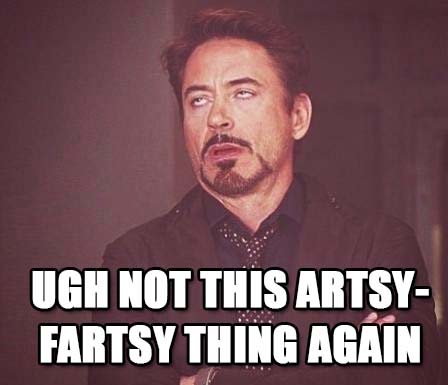
Yes, Tony, in the right hands, Art is a powerful force for good.
This superwoman paints, sings, dances and plays several musical instruments, including the ‘sape’. She also teaches the ‘sape’ and other traditional Sarawak performing arts to locals and foreigners. On top of that, she’s been invited to speak at several venues, including TEDxKL, Borak Art Series Sarawak and MaGIC Academy. And she gives numerous interviews every year, advocating for Sarawak culture to be preserved for future generations.
Phew! But there’s more (A lot more, actually! Check out her long list of achievements here)
Alena is one of the first girls to be allowed to play the ‘sape’. And that’s a huge thing because back in the old days, women were not even allowed to touch the instrument. (Funny thing is, it was her mother and aunties who encouraged her to take up the sape!) Alena mastered the instrument under the guidance of national living sape legend, Mathew Ngau Jau, and has performed in over 20 cities so far, including New York and London.

This is a picture of the sape. In case you’re wondering, the sape is the name of the guitar-like instrument that the guys are rockin’ out on. Photo from theborneopost.com and www.oocities.org
Besides her own Kelabit traditions, Alena also learns the old chants, love songs, and dances from the Kenyah, Penan and Orang Ulu elders and performs them whenever and wherever she can. Some of these songs are remembered by only a handful of elders from her grandparents’ generation. She’s learning as many as possible from the elders before… you know.
Alena is the one of the few people who sings while playing the instrument. This style of performance is great for clubs and other small venues, and it opens doors for her to meet and talk to her audience about Sarawak culture. And it works!
“People would come up after a show and tell me they got goosebumps after hearing one of the songs. They don’t even understand the language! But they still feel something from the music. Doesn’t matter if they’re from Borneo, or the tribes, or not… they were touched or learned something from my music…,” said Alena in our interview.
Watch Alena perform and see if you get the goosebumps too:
But performing to tourists and foreigners is not quite the same as preserving traditional culture at home. Tourists memang come here because they are interested to know about our culture. The trick is to convince our local fellas who are not interested!
To add to the problem, she’s really not a fan of the ‘plastic’ way Sarawak culture is presented at times. (Think typical tourism ads or performances.) So, what’s a passionate, conservation-minded artist to do?
To save tradition, she’s breaking tradition!
Alena is realistic enough to accept that the traditional arts cannot remain static. For example, few people care for traditional music these days, simply because most people think it’s really boring. Alena is very aware of this. For traditional culture to survive, she believes it has to be adapted to modern circumstances – while still remaining true to its roots.
To strike this tricky balance, Alena is championing the creation and adaptation of traditional arts done in a more thoughtful way. She hopes that the people of Borneo would think about how their land had shaped them and made them the person that they are, then to express that in their art.
“Sarawakians have so much musical heritage to treasure – Bidayuh chants, old Iban tunes, Penan nose flute to name a few – and I just hope that each of us can work on learning these, and share our music on a global platform,” said Alena in an interview with The Borneo Post.

As a visual artist, Alena combines traditional Sarawak motifs with modern elements, making it acceptable to audiences today. Here, she’s working on a modern version of the Tree Of Life using pastel colours instead of the traditional earthy tones.
Alena thinks that collaborations could change the public’s perception towards traditional arts. Putting her ideas into action, Alena worked with her cousin to produce her first EP, Flight, which was released just last month. The album tries to make traditional music more relatable for urbanites and people who don’t know anything about Sarawak. On ‘Flight’, Alena is backed by instruments such as the violin, harp and percussions while she sings the old songs and plays the sape.
Check out Alena’s performance of a track from ‘Flight’ below. It’s the same song as the one above – Liling – but with other instruments backing her up. What do you think? Goal achieved?
https://www.youtube.com/watch?v=kkahBIRMDJ8
The songs featured on ‘Flight’ have interesting and heavy back stories. Take for example ‘Re Lekuah’, a phrase that means “Oh dear” or to let out a sigh…a phrase that many Kelabits don’t actually know the meaning to anymore.
In her EP, ‘Re Lekuah’ depicts the hardship of young ladies in the olden days.
“I’ve no energy to pound the padi, I can’t carry water in bamboo because it’s too heavy, I can’t wrap the rice in leaves because the rice is too hot for my hands…” – ‘Re Lekuah’, Flight

The video above was taken at the EP’s launch in Timbre at The Row, Kuala Lumpur in September. This is the view from the other side. A full house! Picture from: robinwong.blogspot.my
Despite the beauty of the performance and the artform, here lies the problem. For a culture to survive, there must be enough people who are interested to participate in it. How are you going to convince a generation of iPad-ers, Instagrammers and Uber-riders that songs about padi pounding and hunting animals for your wife’s dinner are relevant?
Can – or should – Sarawak traditional culture be saved?
As each generation adjusts to the world around them, cultures die out and new cultures replace them. It’s just part of the rhythm of life and civilisation. But the SPEED of change in today’s world is something that has never been seen before – ever. Around the world, arts and culture that had lasted for thousands of years have disappeared within a few generations.
It’s because of these rapid changes that traditions should be upheld. They bind people together in shared history and values. As these are passed from one generation to the next, they reinforce what it means to be part of a community. It also honours our ancestors and all the wisdom, skill and knowledge they have to offer us. Leaving our cultural identity behind will be a great loss for society and for us as individuals.
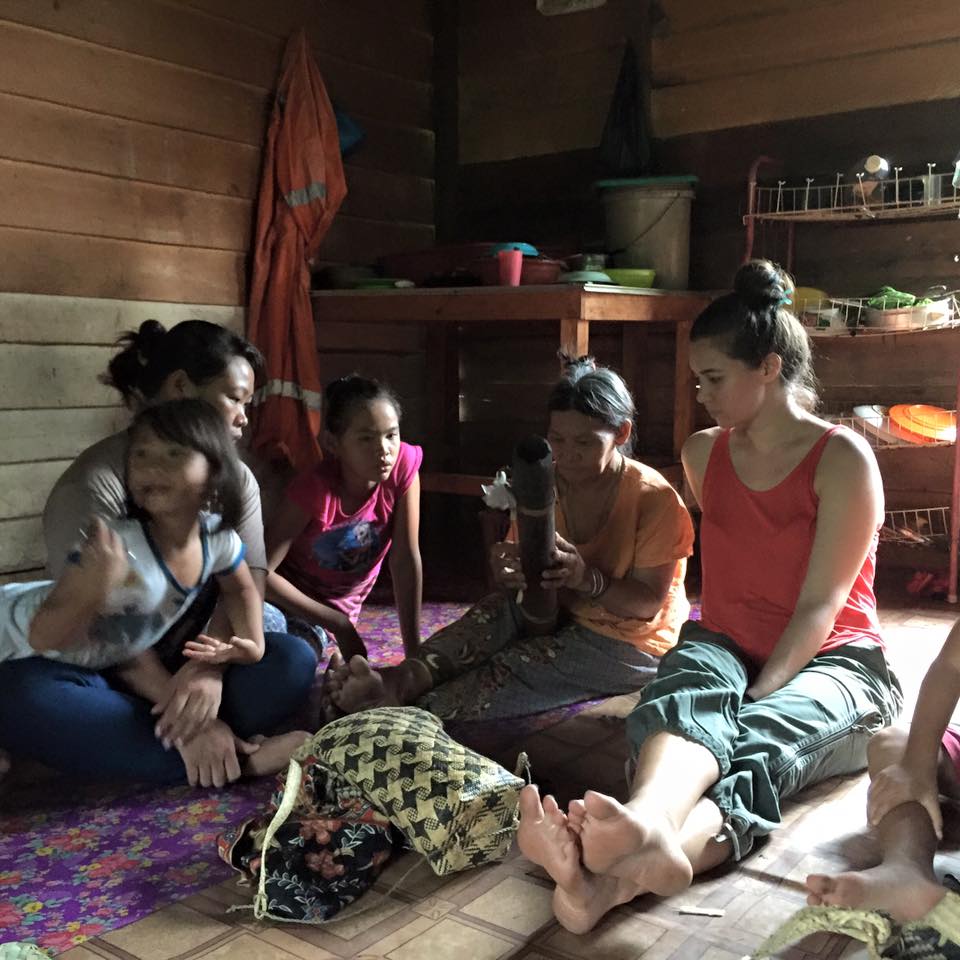
Alena is equally at home in the kampong or the big city. Here she’s watching a village elder make a traditional bamboo flute. Picture credit: Alena Murang
It’s easy to dismiss traditional culture as irrelevant. But think about – dead cultures like the ancient Egyptians, the Incans of Peru, and the Khmer Empire of Vietnam built amazing monuments like the Pyramids of Giza, Macchu Picchu and Angkor Wat. We still marvel at them today, because we no longer have the motivation or skill to build such lasting monuments. That died along with their culture.
But what about closer to home. We don’t have cultures that built massive monuments. Is there anything worth preserving? I think there is. A lot.
“Learning traditional art forms is important because I believe that preservation of the traditional art forms will make us stronger in preserving the natural environment, because it’s the natural environment that has influenced our art,” said Alena in an interview with the New Straits Times
I once went to the Textile Museum in Kuching. You’re probably thinking, “Wow, that’s maybe slightly more interesting that watching paint dry!” I thought so too – at first. But when I examined the intricate hand-woven patterns of the Pua Kumbu on display, I realised something.
These were created by the illiterate ladies of the jungle who had no pen, paper or mathematics to plan the complex algorithms of the patterns. They created the patterns of the bedsheet-sized tapestry – thread by thread – entirely in their head. Then they wove the cloth entirely from memory!

A hand-woven Pua Kumbu. Try counting the threads that go horizontally. Then try counting those going vertically. Imagine coordinating 3 colours of threads to design this complex pattern – entirely in your head. Then, imagine weaving this by hand, from memory. And the cloth is so finely woven it lasts for decades – a feat that even the best machines today cannot recreate! And you thought memorising for Sejarah paper was tough… Hah! Pic credit: The Star
These marvellous skills don’t spontaneously appear in individuals. It takes an entire culture to cultivate and nurture it. If we lose the culture, we lose the skills, wisdom and knowledge that come with it as well.
But Alena has great hopes for the future of Borneo culture and arts because more and more young people becoming interested in traditional Sarawakian music.
“When I was learning the sape, there was hardly anyone learning. Now there are so many people learning. There are more funds and grants to do research on oral traditions and music and art as well. So there is a growing movement,” she told us in our interview.
Some bands – like Nading Rhapsody and At Adau – have a similar mission to what she does and are taking traditional music into new directions. They are actively performing and capturing new audiences.

Then there are the young people like Kendy, who is researching the myths and animist practices of his people, the Bidayuh and putting them down on record.
As Sarawakian society shifts its focus from the jungle to the urban areas, it’s unavoidable that many aspects of its traditional culture will disappear. This is a fact that Alena accepts. But she hopes that more young artists, especially from Sarawak, will follow in her footsteps to preserve the various traditional arts.
“Traditions and cultures do fade. The question is, do you want it to? If you don’t, then you have to do something about it. I don’t want Borneo culture to fade,” said Alena in our interview.
https://www.youtube.com/watch?v=f3LbGG7HbGA
- 17.7KShares
- Facebook17.3K
- Twitter48
- LinkedIn9
- Email96
- WhatsApp205

